
Product Information
Balsamic Vinegar Production
Our California balsamic vinegar is produced from the juice of just-harvested zinfandel and cabernet grapes grown in Yolo County and boiled down to create a concentrate, which is then fermented with a slow aging process which concentrates the flavors. The flavor intensifies over the years, with the vinegar being stored in wooden casks made of different woods like chestnut, acacia, cherry, oak, mulberry, and ash. None of the product is withdrawn until the end of the aging period of 6 years. At the end of the aging period a small portion is drawn from the smallest cask and each cask is then topped up with the contents of the preceding next larger cask. Freshly reduced cooked must is added to the largest cask and in every subsequent year the drawing and topping up process is repeated.
Balsamic Vinegar Use
Balsamic vinegar is used in salad dressings, dips, marinades, reductions and sauces. It is also used sparingly to enhance steaks, eggs or grilled scallops or shrimp, as well as simple pastas and risottos, on fresh fruit such as strawberry and pears and on plain cream ice cream. Balsamic vinegar has excellent digestive properties and it may even be drunk from a tiny glass to conclude a meal.
Product Reviews
1 review for Balsamic Vinegar
You must be logged in to post a review.

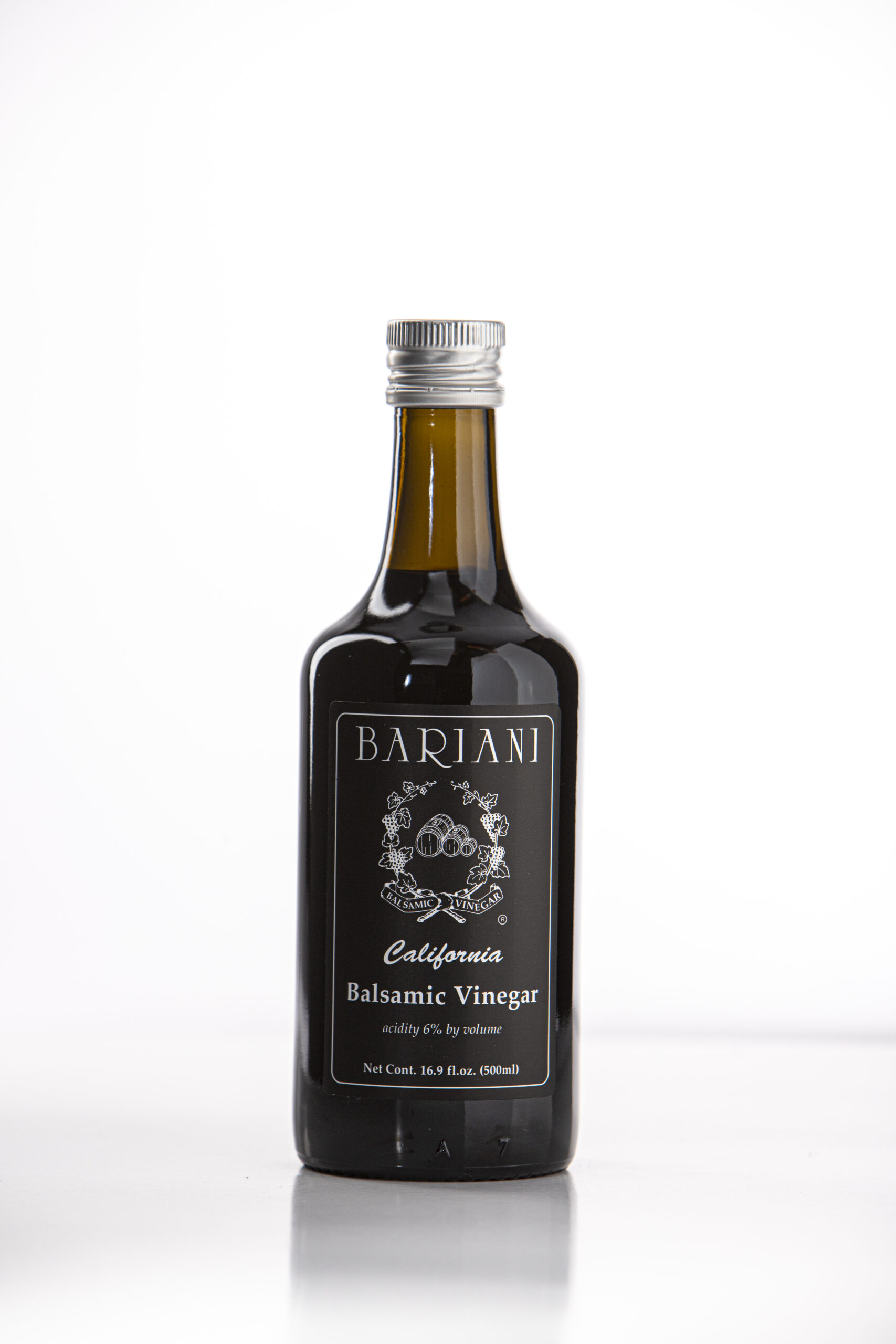
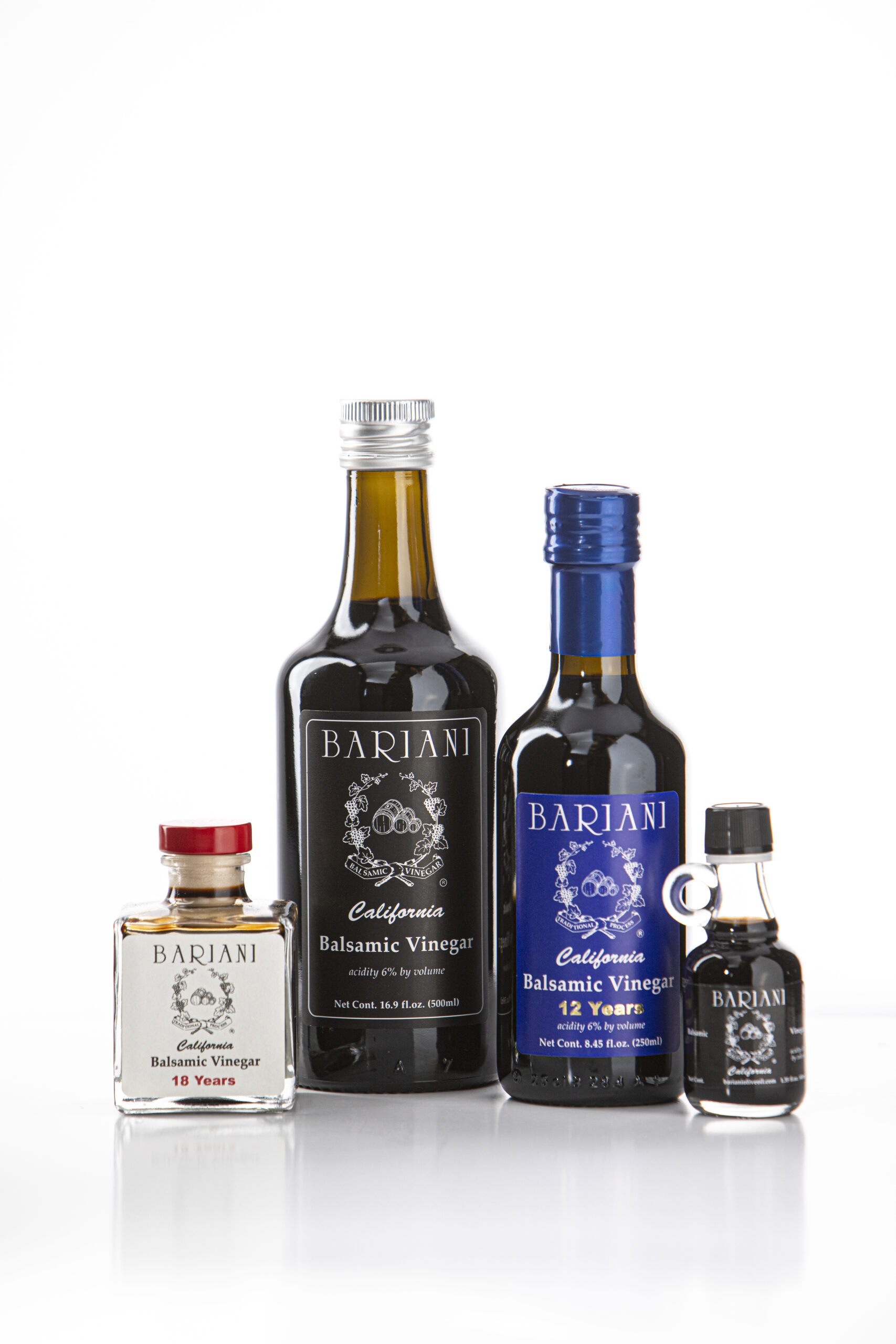
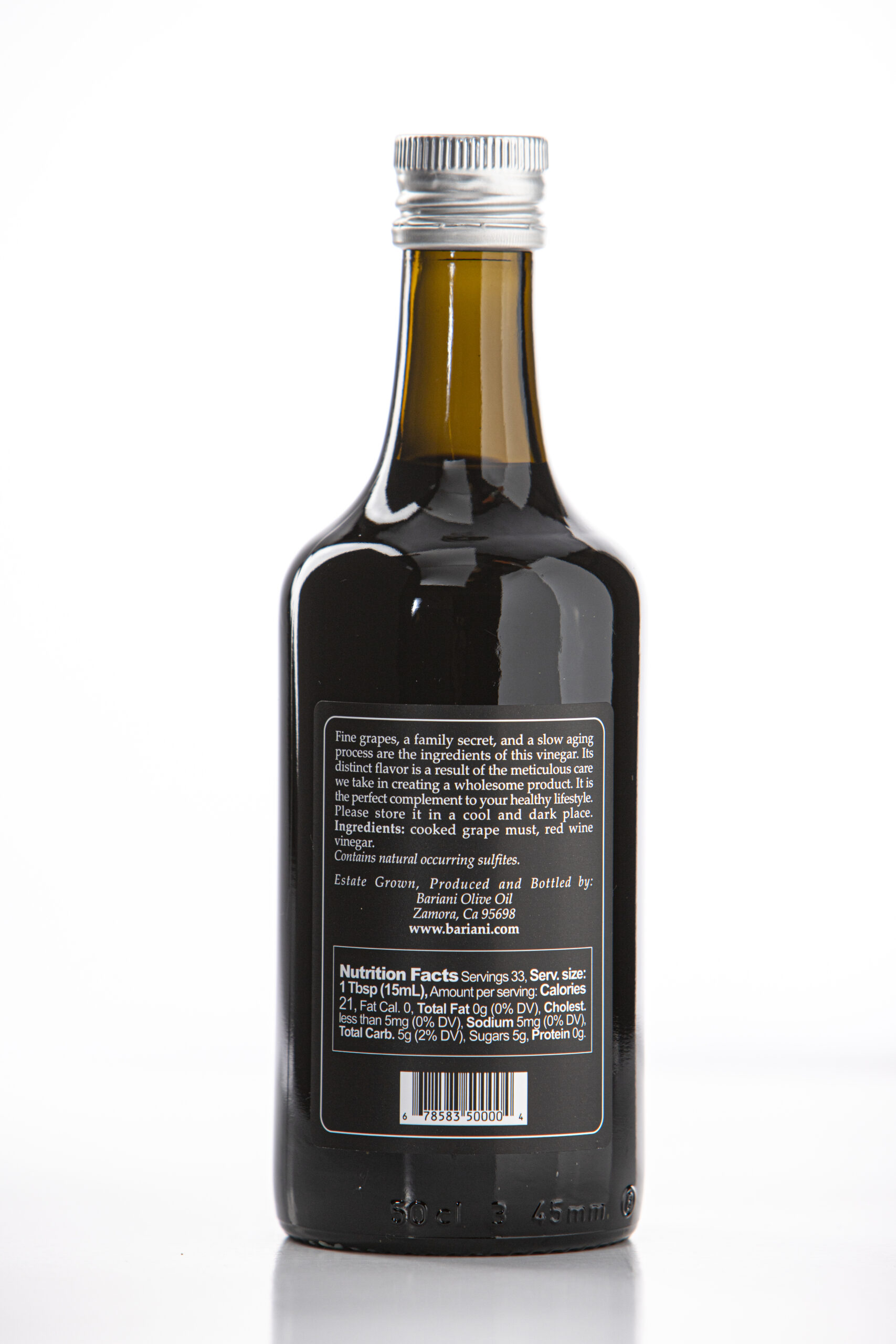
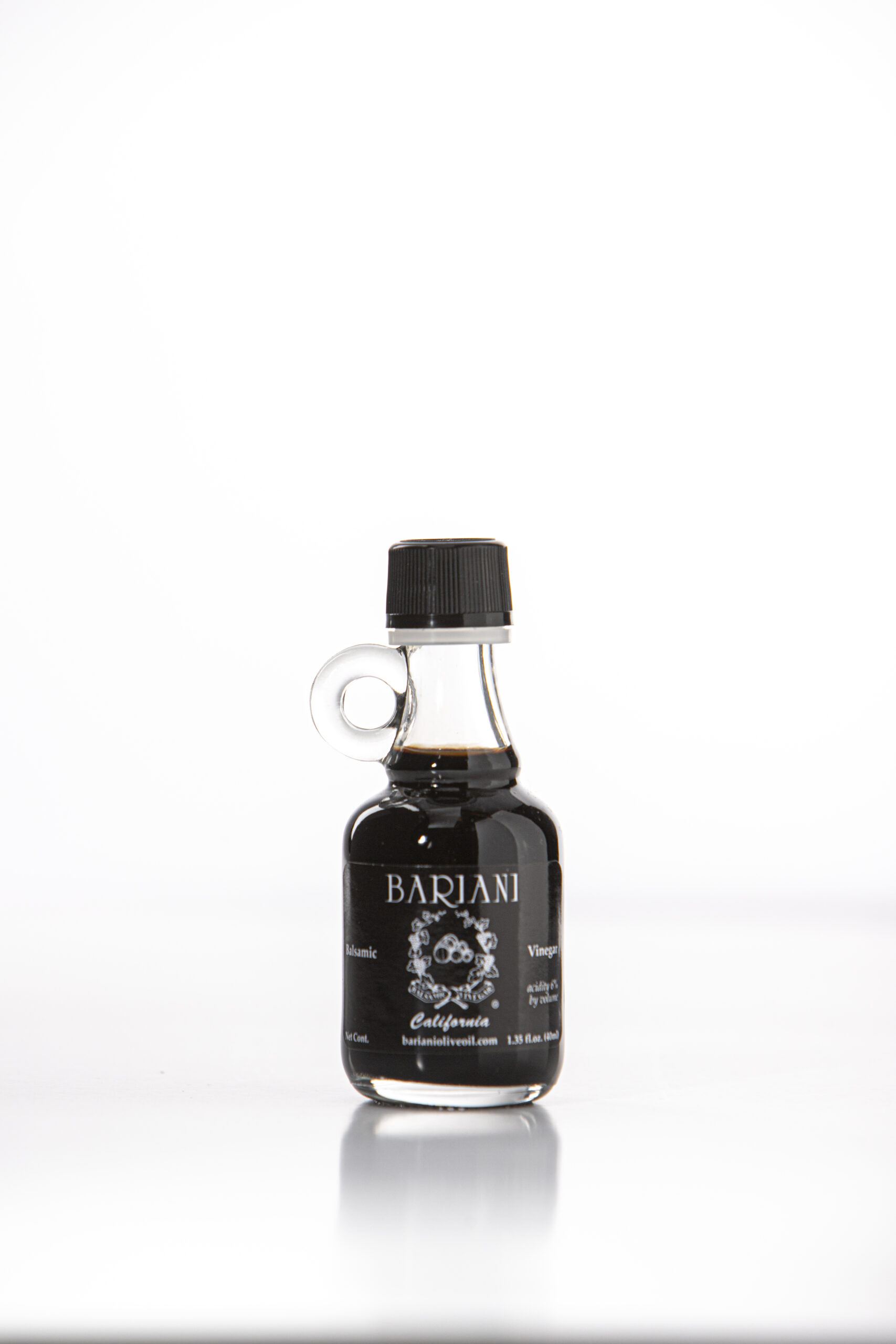
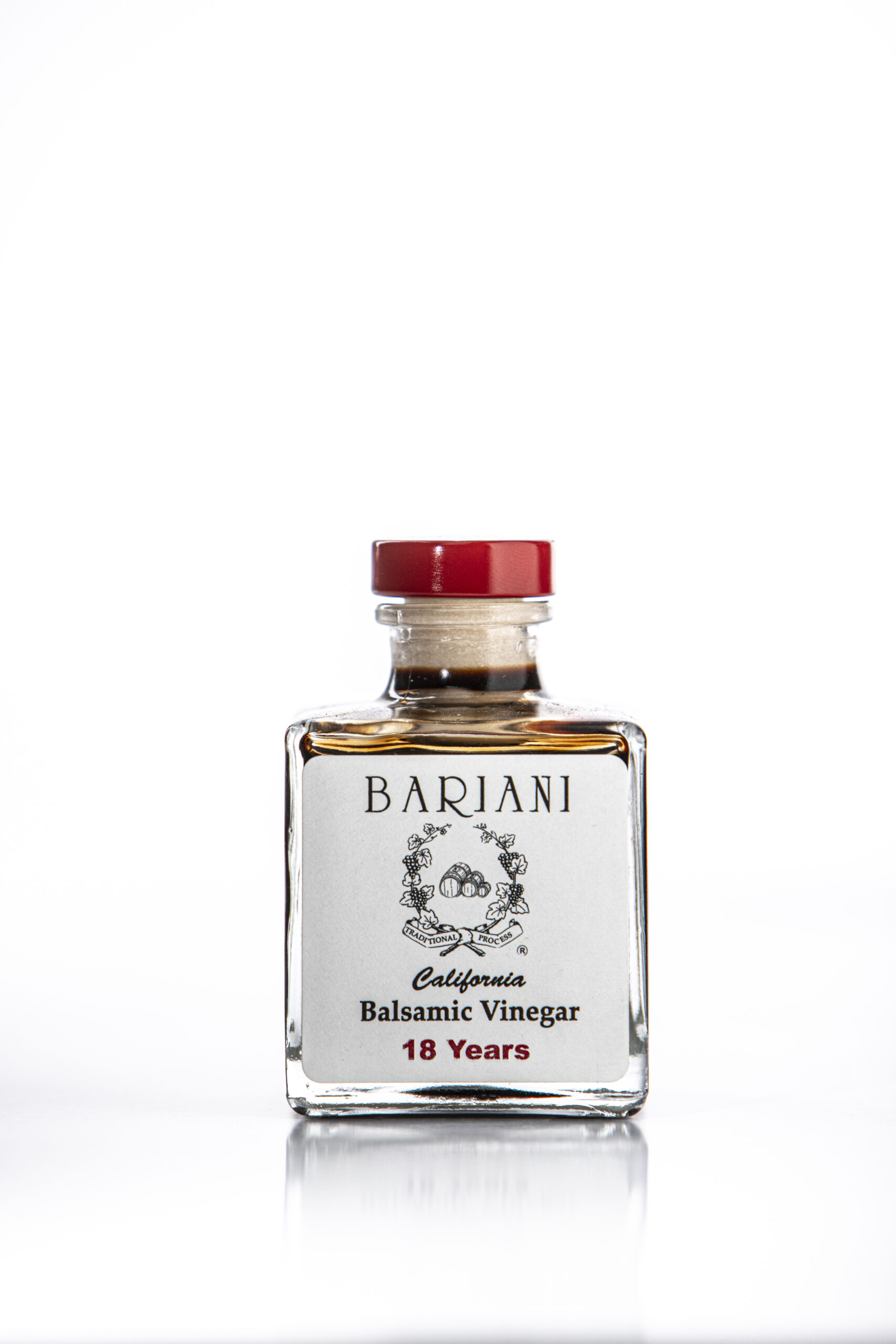
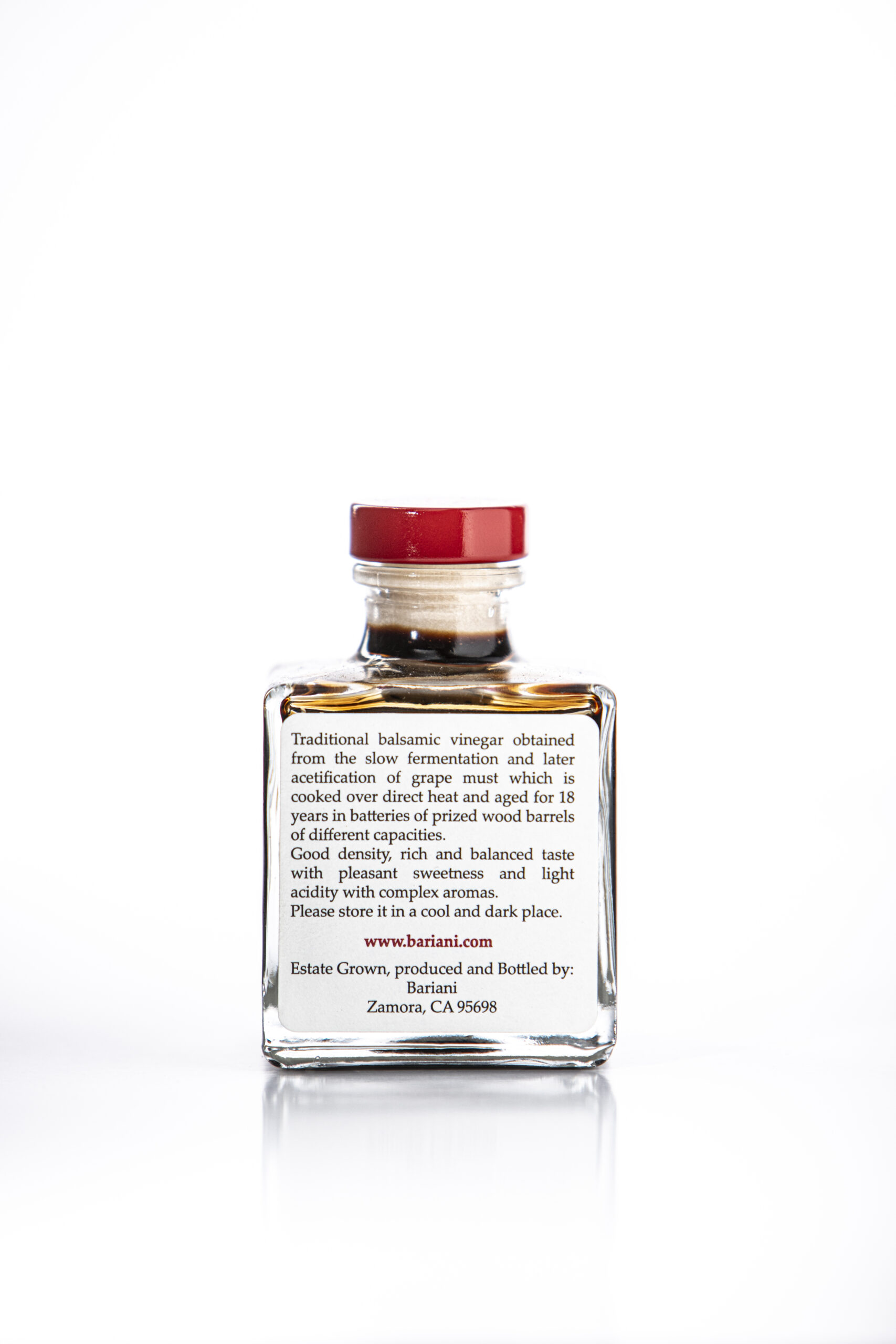
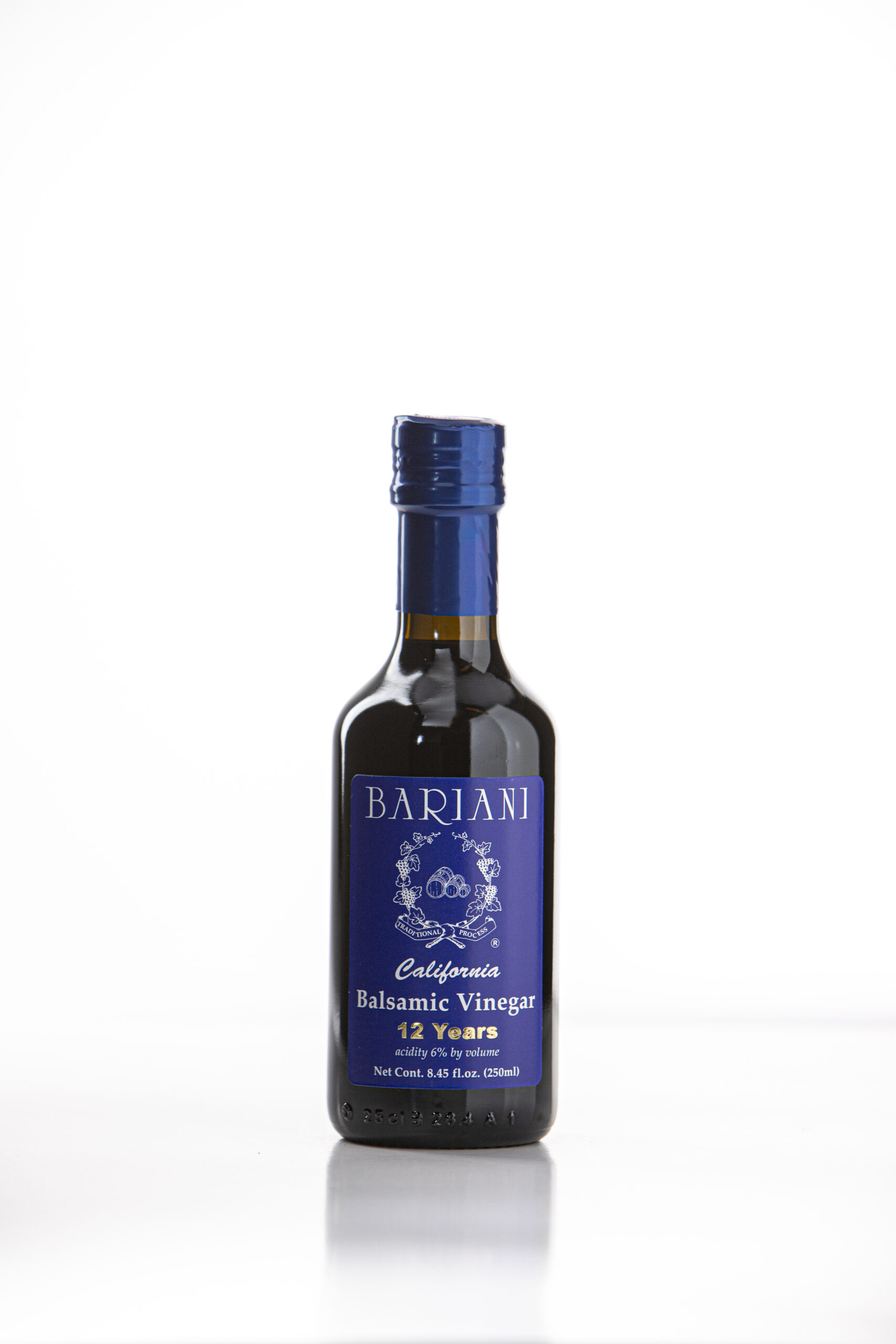
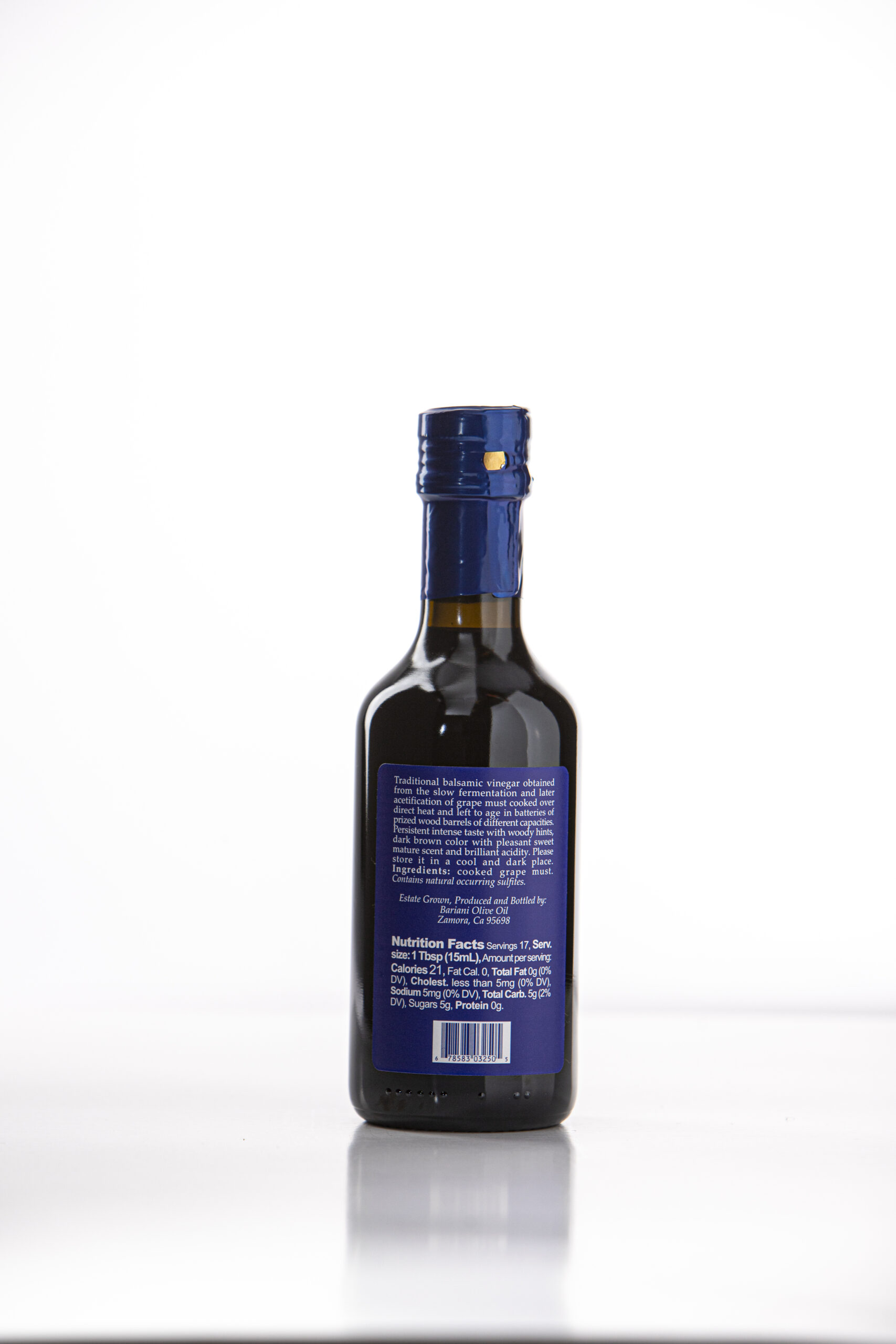
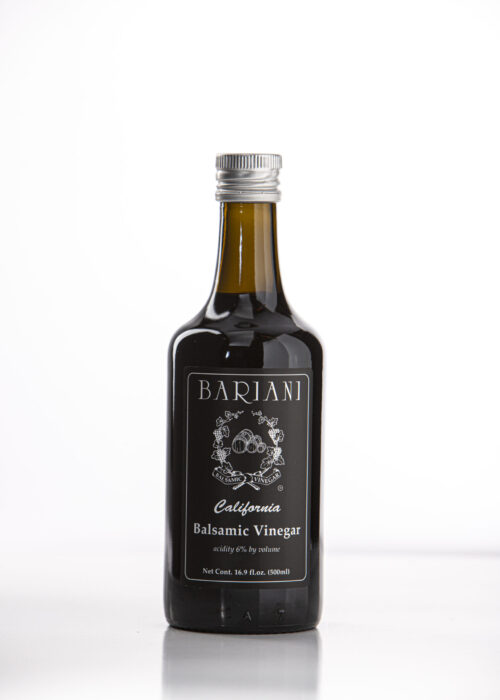
Jim T. –
We were on vacation in San Francisco and tried the Bariani balsamic vinegar and olive oils. They were extraordinary! We have ordered some to be shipped here to Florida to enjoy and share with our friends. What a fantastic product and beautiful story of family business.